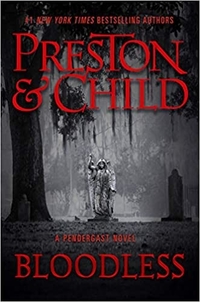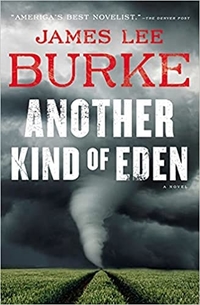Shards of Earth by Adrian Tchaikovsky
 Wednesday, August 25, 2021 at 6:58AM
Wednesday, August 25, 2021 at 6:58AM 
Published by Orbit on August 3, 2021
Adrian Tchaikovsky built a detailed universe for Shards of Earth, the first book of the Final Architecture series. That universe is fundamental to the novel, but it never gets in the way of a multifaceted space opera that features creative aliens and appealing human characters.
A human diaspora led to the settlement of hundreds of worlds in the novel’s far future. As humans tend to do, they have divided themselves into factions. Most worlds colonized by humans belong to the Council of Human Interests, or Hugh. Some have followed the Essiel, an ancient alien race that has organized the Hegemony and promises protection from threats if its members will accept the Essiel as divine beings. While the Essiel generally leave species and individuals alone if they choose not to follow the Essiel, the humans who join the Essiel, being human, tend to become cultists.
The primary threat to humanity comes from inscrutable aliens called the Architects. The Architects destroy inhabited worlds. They’ve destroyed alien civilizations in the past and, a few decades before the novel begins, they turned their attention to human worlds, starting with Earth. Their ships appear out of nowhere and, using a technology that humans don’t understand, reshape planets by pulling at their cores and turning the planets inside out. They take a similar approach to the ships that attack them. The new contours of the reshaped planets and ships might be appreciated for their aesthetic value, although not by their dead inhabitants. Perhaps the destruction is a form of artistic creation, a theory that explains why humans refer to the aliens as Architects.
A group of women called the Parthenon represent a human faction outside of the Hugh. They reproduce parthenogenetically and are genetically engineered to be, as conceived by their founder, ideal representatives of humanity. The Partheni are fierce warriors but they are viewed with suspicion by humans who believe rumors that the Partheni kill male babies and want to form a superior race that will subjugate lesser humans. Whether their founder actually intended the Partheni to rule others was, at least for a time, a subject of some debate among the Partheni, but less authoritarian Partheni minds ultimately prevailed.
While the Parthenon fought alongside the Hugh against the Architects, a different breed of human provided the key to the war. A 15-year-old girl named Xavienne was able to reach into the mind of an Architect and turn its ship back. Humans tried to engineer that same ability into volunteers known as Intermediaries, killing most of them in the process. The most successful Int was Idris Telemmier. He teamed with a Partheni named Solace in the war’s most important battle.
The other primary defense against Architects are relics left on certain worlds by an ancient race known as the Originators. The Architects won’t go near those worlds. Unfortunately, the relics lose their power to deter Architects when they are transported elsewhere.
All of this is background to a story that takes place several decades after the Architects disappeared. By virtue of their engineering, Ints are able to pilot vessels in unspace. That makes them valuable even in the absence of the enemy Architects. While most humans lose their sanity (or at least their lunch) unless they sleep through journeys into unspace, Ints can withstand the discomfort. Telemmier nevertheless experiences barely suppressed horror based on his sense of a terrifying presence in unspace.
Telemmier is now piloting a salvage vessel called the Vulture God. Decades after they were last together, Solace is asked to recruit Telemmier to work for the Partheni. After proving her worth to the ship during a skirmish on an unwelcoming planet, she joins the crew so she’ll have the opportunity to make her pitch to Telemmier.
Apart from Telemmier and Solace, the novel’s primary characters are other crew members of the Vulture God. A shrewd lawyer named Kris, a factor (deal maker/accountant) named Kit, a drone specialist named Olli, and a search specialist named Medvig are the most memorable characters. Kit is Hammilambra, an alien species whose members resemble crabs. Medvig is a Hiver, a distributed intelligence that resides in cyborg insects that inhabit mechanical bodies. Olli was “born a stranger to her human body” and relies on mechanical devices for transportation (her favorite resembles an oversize scorpion). A Hiver archeologist named Trine becomes a de facto crew member when Solace needs his expertise to analyze some relics. The wormlike Castigar and symbionts called the Tothiat are among the other species that populate the universe.
The plot takes off when the Vulture God contracts to recover a missing ship. The crew discovers that the ship has been reshaped, suggesting that the Architects have returned. The crew encounters one obstacle after another when they try to bring the ship home. Various parties, including a group of Essiel gangsters and the human version of the CIA/KGB, want to seize the ship or its contents, kidnap Telemmier, or start a fight. As the reader might expect, the Architects do return, forcing a reluctant Telemmier to once again play hero. By the end, Telemmier learns something about the Architects and their mission that will undoubtedly set up the next book in the series.
In the grand tradition of science fiction, Telemmier also learns something about himself as he finds the courage and pluck to return to heroic conflict after embracing obscurity during decades of peace. He also finds that he missed Solace, having bonded with her in battle, although he doesn’t particularly trust her. Solace’s own conflict, between her loyalty to the sisterhood of Parthenon and her friends on the Vulture God, tests her in a way that will be familiar to science fiction fans.
Shards of Earth is built on a carefully conceived foundation that suggests an epic story, yet Tchaikovsky never lets the story get away from him. He balances the big picture with interpersonal conflicts, making it possible for the reader to relate to the characters, even if they aren’t the sort of cyborg insects who live next door. I wouldn’t say that the far future is so different from the present that it represents a brilliance of imagination, but the story is satisfying, the characters have distinct personalities, and the true nature of the Architects presents an intriguing question. I look forward to learning any answers Tchaikovsky decides to provide in the next novel.
RECOMMENDED



